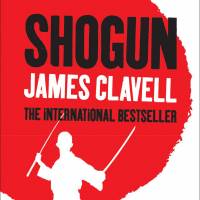This best-selling historical novel by the British author, James Clavell, is set in Japan around 1600. It begins when The Erasmus, a Dutch ship, reaches Japan by mistake. James Blackthorne, the English captain working for the ship (based on William Adams, the first Englishman to enter Japan) is singled out for his courage and eventually earns the respect of the locals and even the feudal lord Yoshinaga Torunaga (based on Tokugawa Ieyasu) by adopting Japanese ways.
Shogun, by James Clavell.
Hodder & Stoughton, Fiction.
In a break from the classic rule of "show and don't tell" when writing fiction, Clavell includes many factual tidbits unrelated to the main narrative, which are enjoyable if you want to learn in a pop-culture fashion. The novel contains multiple scenes where characters discuss facts about Japan or the Japanese language, such as this one:
"Oh, no, Anjin-san. Japanese is very simple to speak compared with other languages. There are no articles, no 'the,' 'a,' or 'an.' No verb conjugations or infinitives. All verbs are regular, ending in masu, and you can say almost everything by using the present tense only, if you want."
The characters often think with a smattering of Japanese thrown in, the use of "neh," in particular, is excessive, and it seems Clavell imagined all samurai would use this word in almost all their internal monologues. Strange, neh?
Despite being a rather overweight tome, "Shogun" combines history, entertainment and information in such a way that readers may just get more of a Japanese history lesson than they expected. (William Bradbury)
Each week "Essentials" introduces a work of fiction that should be on the bookshelf of any Japanophile.
















With your current subscription plan you can comment on stories. However, before writing your first comment, please create a display name in the Profile section of your subscriber account page.